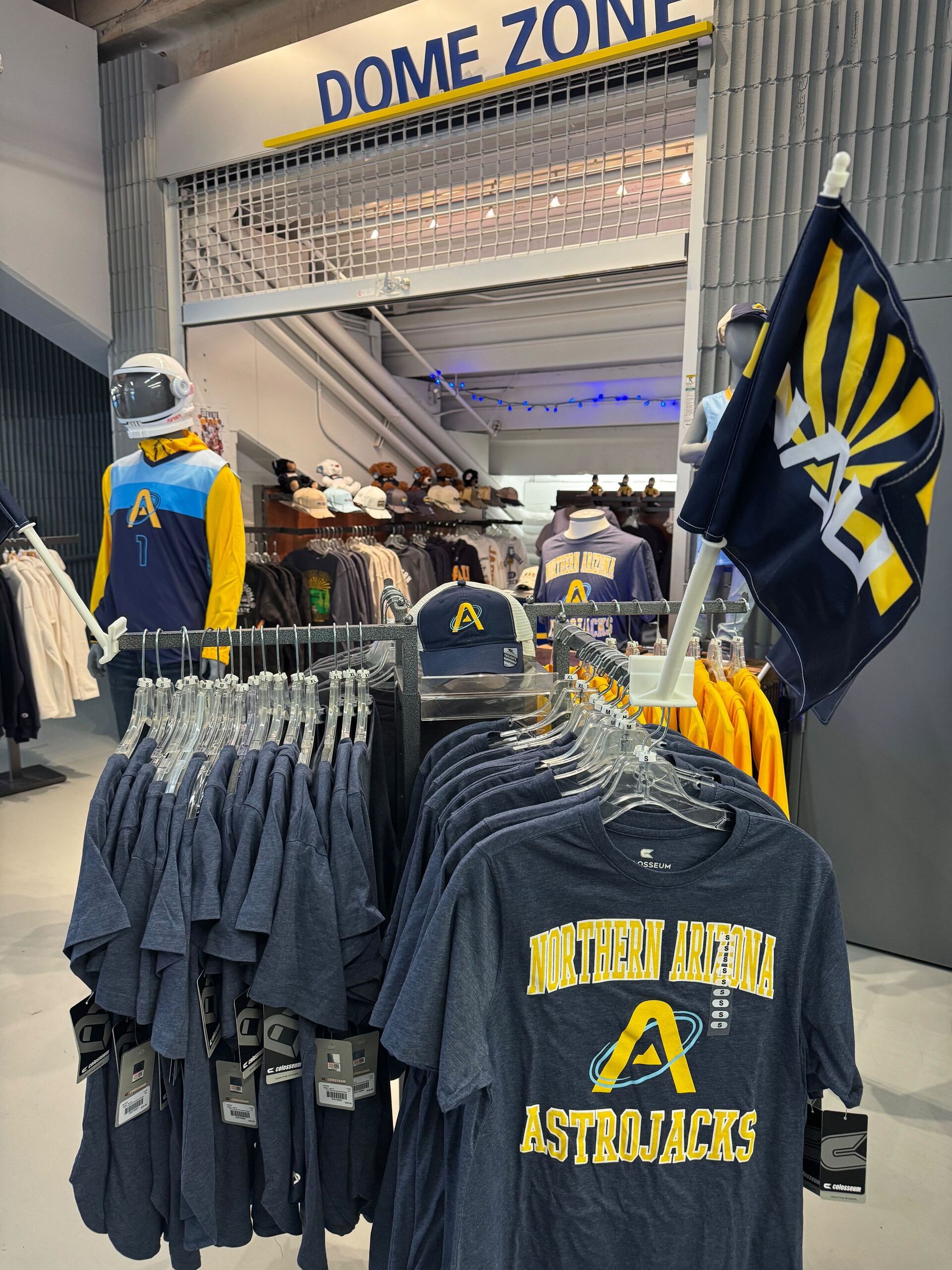Good morning, and thanks for spending part of your day with Extra Points.
A few bits of housekeeping news before we get to today’s story…
1) Mark your calendars! Extra Points will be in Raleigh for the 2nd Annual Sports Podcast Festival. On Friday, August 22 at 8 PM ET, I’ll be at Bond Brothers Eastside in Cary for a show with the Hand In The Dirt Podcast and the Ovies & Giglio show. I will also be participating in the main Podcast Festival event on Saturday, August 23 with my pals at Split Zone Duo and other podcast friends. If you’re in the Triangle area, come and say hi! You can grab tickets to the Saturday show here.

2) Speaking of travel, going to mention this here a few times. I’m taking my family to Brazil from July 7-17. My plan to run freelance stories while I’m out, so the newsletter will continue to publish. We pay for these freelance submissions. If you have a story you’d like to run during that window that you think would be a good fit for Extra Points, send a note to [email protected]. And if you have business or editorial things you want to discuss with me, let’s try to do it before I leave for São Paulo 🙂 .
Finally, let me share a quick message from our sponsor of today’s free Extra Points newsletter: Particle Face Cream.
See the difference with Particle
Particle Face Cream is specifically engineered for men’s tougher, more rugged skin with the highest quality ingredients backed by science. Plain and simple, it works, and the numbers show it…
97% of customers saw diminished eye bags
93% saw fewer dark spots
700,000+ happy customers, 4.8-star rating, and a 30-day money-back guarantee
It combines six powerful effects in one, making it the best product for men who want to keep looking good as they age without too much hassle.
Speaking of freelance stories, today I’m happy to pass the microphone over to Pamela Seidenman.
Seidenman is the founder of Accelerate Equity, which advances opportunity and equal treatment for girls and women’s sports. Her Gender Equity Dashboard makes it easy to see if women are getting an equitable share of roster spots and athletic scholarships at any college, as the law requires. You can also see how spending on men’s and women’s sports and on recruiting compares at any school. Follow Accelerate Equity on LinkedIn and Bluesky. Her thoughts are below:
The House v. NCAA settlement is barely two weeks old, and two groups of women athletes have already filed appeals on the grounds its distribution model for back damages is discriminatory. The agreement mandates that 90 percent of the $2.78 billion in damages go to football and men’s basketball players. Five percent will go to women’s basketball players and 5 percent to athletes in all other sports.
When it comes to future revenue, each college can decide how to allocate funds, though many have said they will use the backpay distribution model as a precedent.
After all, media rights for football, followed by men’s basketball, generate the vast majority of college sports revenue. So if football and basketball bring in that money, players of those sports should benefit, right? That’s what the settlement implies.
But what if I told you a little-known story about how the NCAA didn’t just ignore the revenue potential of women’s basketball, but also put up barriers that made it nearly impossible for the sport to bring in much money? It might start to look like the settlement uses historical discrimination to justify future discrimination.
Over the past few decades, men’s March Madness has brought in much more revenue than the women’s tournament because the NCAA negotiated wildly better media deals for the men. It then promoted the men’s tourney far more extensively, because it provides the vast majority of the NCAA’s revenue. In 2010, the NCAA negotiated a deal with CBS/Turner for the rights to men’s March Madness for $771 million annually. But NCAA leaders seemed unable to imagine that people wanted to watch women’s basketball, so just a year later, they didn’t put the rights up for a competitive bid. Instead, they extended their existing contract with ESPN, for $6 million per year — less than 1 percent of the men’s contract.
In 2024, a new deal with ESPN upped the price of women’s March Madness to $65 million per year, despite a market study that estimated the rights were worth about $100 million. Meanwhile, starting in 2025, the NCAA’s deal with CBS/Turner pays an average of $1.1 billion annually for men’s March Madness.
There’s more: NCAA leadership also structured partner and media rights deals in ways that hamstrung women’s March Madness and limited its ability to attain sponsors, even as it grew in popularity.
The NCAA gave CBS/Turner exclusive rights to negotiate corporate partnerships and sponsorships for all 90 NCAA championships, even though the network only broadcasts the men’s tournament. Meanwhile, ESPN airs 40 additional college tournaments but doesn’t have the right to negotiate sponsor deals. This creates a classic conflict of interest. Why would CBS/Turner go out of its way to line up sponsors for ESPN? Instead of helping a rival network, its interests are better served by having companies sponsor the men’s tourney and keeping more of the revenue.
It gets worse. CBS/Turner prohibits companies from sponsoring only women’s March Madness. Instead, they require any company that wants to sponsor any of the NCAA’s 90 championships to first sponsor the men’s tournament. Sponsorship rights are estimated to start at $30 million for the top-tier corporate sponsors and at $7 million for the lower tier, limiting the number of brands that can afford it. And for those that can, after sponsoring men’s March Madness, there’s a lot less money, if any, left to spend on other championships.
From a revenue perspective, the NCAA set up men’s basketball to succeed — and every other sport (except football, whose FBS championship is governed by the College Football Playoff) to fail.
In the case of the women’s game, low expectations led to lack of investment, which led to poor viewership and low ratings, which led to low revenue and the false conclusion that the product wasn’t any good, leading to low investment the next time around. For years, the NCAA operated as if the women’s basketball championship (which was only allowed to use “March Madness” branding beginning in 2022) could only ever operate at a loss. So it spent less on the event, providing a second-rate experience for players and fans, and still has not realized the sport’s true potential.
Now that we are on the cusp of revenue sharing, the NCAA’s past decisions, which shortchanged the women’s game for decades, threaten to perpetuate that discrimination. Today’s women athletes should not be penalized with lower back damages and future revenue payments because NCAA decision-makers neglected their sports and suppressed their value.
How do we know that women’s sports have significant value? That’s simple: Now that they’re easier to find on linear TV and online — and they benefit from shoulder programming and social media for storytelling — there have been huge increases in viewership, attendance, and valuations.
In 2025, ad sales for women’s March Madness increased 200 percent. Global revenue for women’s sports passed $1 billion for the first time in 2024 and is poised to pass $2 billion this year. WNBA viewership increased by 170 percent in 2024. Valuations for pro teams are rising steeply, Major League Baseball recently invested in Athletes Unlimited softball, and Unrivaled, a three-on-three basketball league, nearly broke even in its first year, earning $27 million in revenue and paying its players the highest average salary of any professional women’s league.
The product has been great for a long time; it was just hidden in a dark corner and starved of the investment that has built men’s college sports into the lucrative industry it is today.
These arguments would be valid even if there were no such thing as Title IX, the civil rights law that requires schools that receive federal funding to provide equal opportunity and benefits to men and women, including any type of financial assistance that is tied to participation in athletics.
When Judge Claudia Wilken, who issued the ruling in House vs. NCAA, said the settlement was an antitrust case and thus had nothing to do with Title IX, I’m not sure what she was thinking. I’m not a lawyer, but approving a settlement that violates an established civil rights law doesn’t seem like it’s in anyone’s interest, given that it cries out for immediate legal challenge. (Over the years, there have been several failed attempts to exempt football from Title IX on the basis that it generates revenue. As preeminent Title IX lawyer Arthur Bryant told the Corporate Crime Reporter, a legal newsletter, in June: “You can’t justify discrimination because it makes money. That’s not allowed under the law.”)
So how should the settlement work? Schools should share back damages and future revenue similar to how they distribute athletic aid: in proportion to the number of athletes of each gender.
But until the courts mandate that Title IX applies, it will be the rare power conference school that chooses to distribute back damages and revenue equitably, given the pressure to field competitive football and men’s basketball teams. To those schools that pursue equitable distribution, I salute you.
And to those that don’t, I hope the courts rule soon, so that you don’t need to walk back too many commitments.
If you’re interested in transparency in college sports data, you’d love the Extra Points Library. Our document database has over 7,000 contracts across D-I and D-II, from coaches, athletic directors, GMs, vendors, and more. We also have the ability to analyze and compare that financial data, letting you pull charts to answer questions like who spent the most money on athletics travel in FY24?
Extra Points Library is just $200/mo or $2,000/year for a license, with bulk discounts available for athletic departments, newsrooms or academic units. For more information or to schedule a free demo, drop me a line at [email protected] or search for yourself here.



















